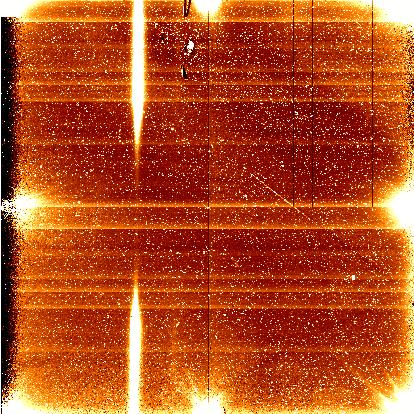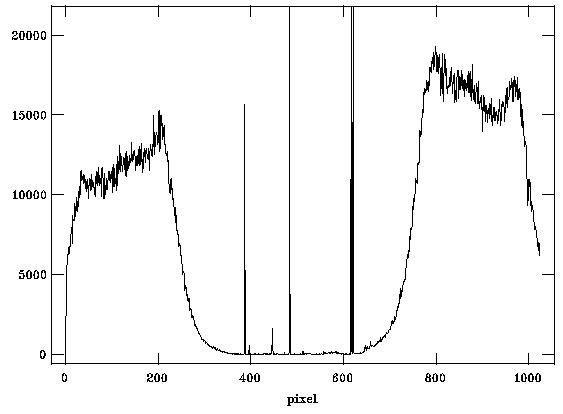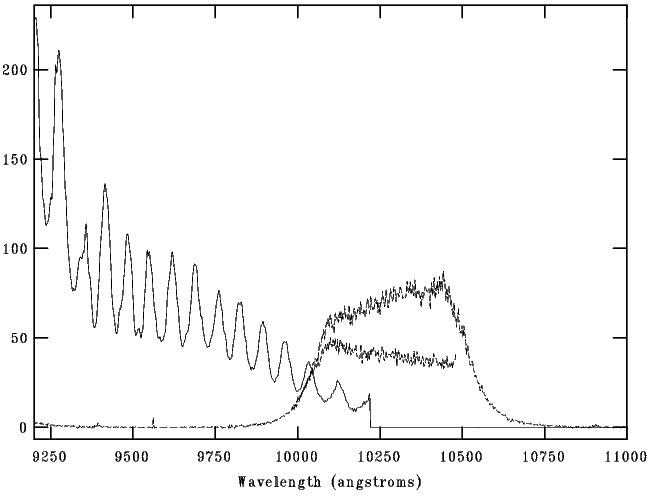NOTcam WFC spectroscopy: Z-band spectroscopy
Commissioning of the spectroscopic mode of
NOTcam was finalised in 2005.
Low-res spectroscopic J, H, and K-band first-light observations were obtained in
August 2003.
In March 2004, Dr. Groeningsson and Dr. Mattila from Stockholm
University obtained the first spectra with NOTcam's Yn-band
filter (ID #222). This narrow filter samples 1.00 to 1.06 microns,
approximately: this filter transmission bares no resemblance to that of
the much wider standard Z filter, as defined for optical CCDs.

Stellar spectrum obtained with the Wide Field Camera and the Yn filter.
The 6th order runs from the Yn cut-off around 1.06 micron towards
shorter wavelength at the top of the image. The 7th order runs from
the bottom of the image to the Yn cut-on at around 1.0 micron. The two
orders overlap in wavelength. In this 200 second exposure no
clear sky-lines are visible, implying that proper wavelength calibration
awaits a dedicated calibration unit (as for the J-band spectra).

Spectrum extracted from the image shown above, showing the flux
distribution along the chip.
Comparison to ALFOSC

The plot shows the ALFOSC+CCD#8 counts in e-/s/Angstrom using grism #5, and
the NOTCAM counts using the only spectroscopic setup that we have
(grism #1). The same star was used but on different nights, so the
results may depend on this a little but are according to
expectations.
The ALFOSC spectrum cuts at about 10250 Angstrom due to the
end of the chip. The ALFOSC spectrum is plagued by fringing.
The NOTCAM counts are drawn with 2 dotted lines, showing the
contribution of grism order 6 and 7. The NOTCAM filter used is the
Yn filter (ID #222, or 1 micron filter), which is the
'bluest' 'wide-band' filter we currently have in NOTCAM.
The implications of these data is that NOTCAM gives better throughput
than ALFOSC down to at least as blue as 9300 or so, and with much less
fringing effects. Currently we are not able to benefit from these
NOTCAM features as we dont have appropriate wide-band filters for
imaging and spectroscopy, nor a NIR grism that is optimised for this
region.
John Telting (jht)


